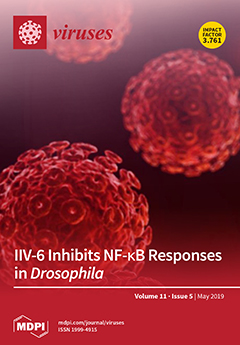Type I interferons (IFNs) have been shown to play an important role in shaping adaptive immune responses in addition to their antiviral properties in immune cells. To gain insight into the impact of IFN-I-induced pathways involved in early adaptive immune responses, i.e., antigen-presenting pathways, in an Atlantic salmon-derived (
Salmo salar L.) macrophage cell line (TO-cells), we used a comparative de novo transcriptome analysis where cells were treated with IFN-I or kept untreated and concurrently infected with salmonid alphavirus subtype 3 (SAV3). We found that concurrent treatment of TO-cells with IFN-I and SAV3 infection (SAV3/IFN
+) significantly enriched the major histocompatibility complex class I (MHC-I) pathway unlike the non-IFN-I treated TO-cells (SAV3/IFN
−) that had lower expression levels of MHC-I pathway-related genes. Genes such as the proteasomal activator (
PA28) and β-2 microglobulin (
β2M) were only differentially expressed in the SAV3/IFN
+ cells and not in the SAV3/IFN
− cells. MHC-I pathway genes like heat shock protein 90 (
Hsp90), transporter of antigen associated proteins (
TAPs) and tapasin had higher expression levels in the SAV3/IFN
+ cells than in the SAV3/IFN
− cells. There were no MHC-II pathway-related genes upregulated in SAV3/IFN
+-treated cells, and cathepsin S linked to the degradation of endosomal antigens in the MHC-II pathway was downregulated in the SAV3/IFN
− cells. Overall, our findings show that concurrent IFN-I treatment of TO-cells and SAV3 infection enriched gene expression linked to the MHC-I antigen presentation pathway. Data presented indicate a role of type I IFNs in strengthening antigen processing and presentation that may facilitate activation particularly of CD8+ T-cell responses following SAV3 infection, while SAV3 infection alone downplayed MHC-II pathways.
Full article






